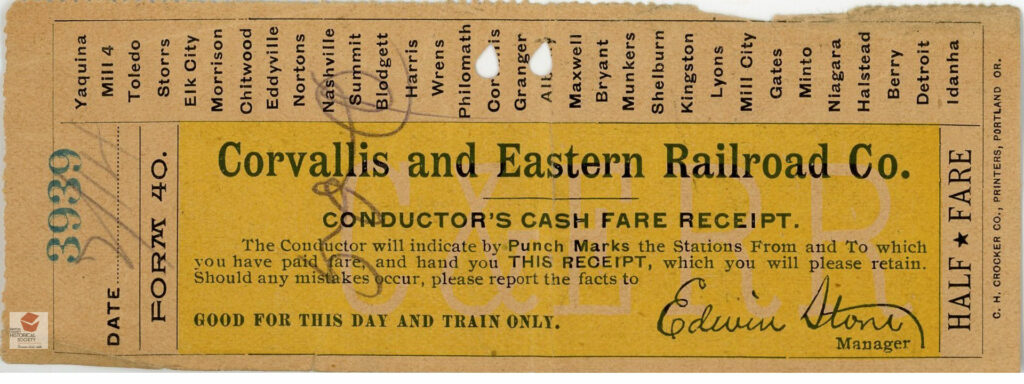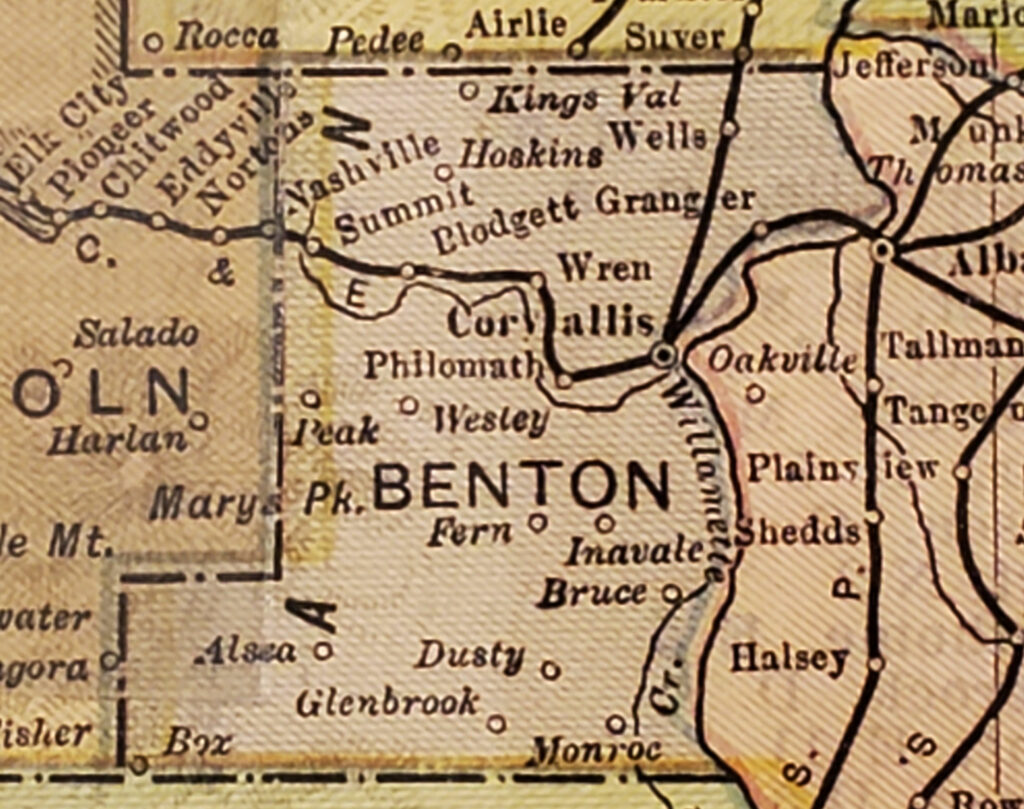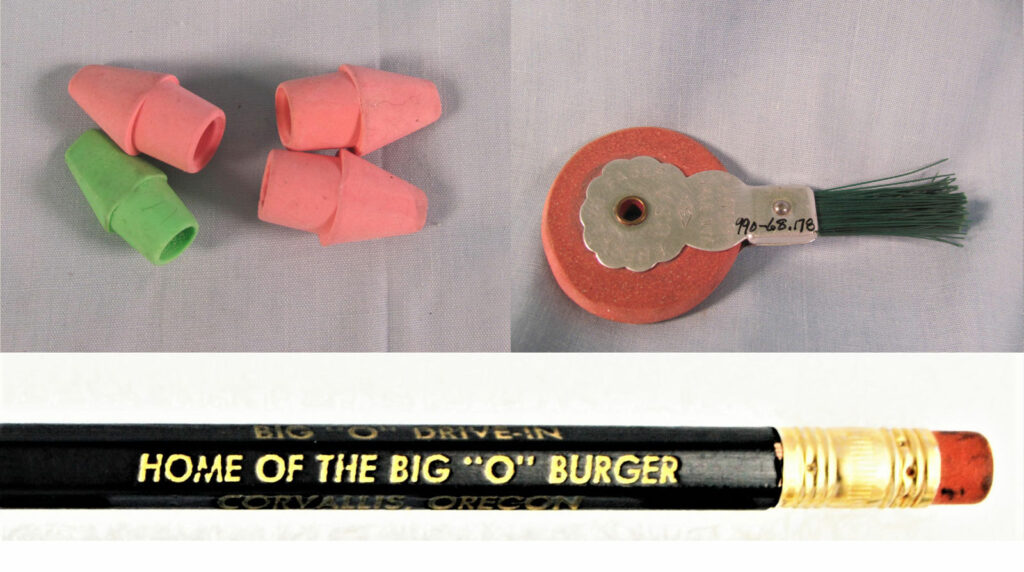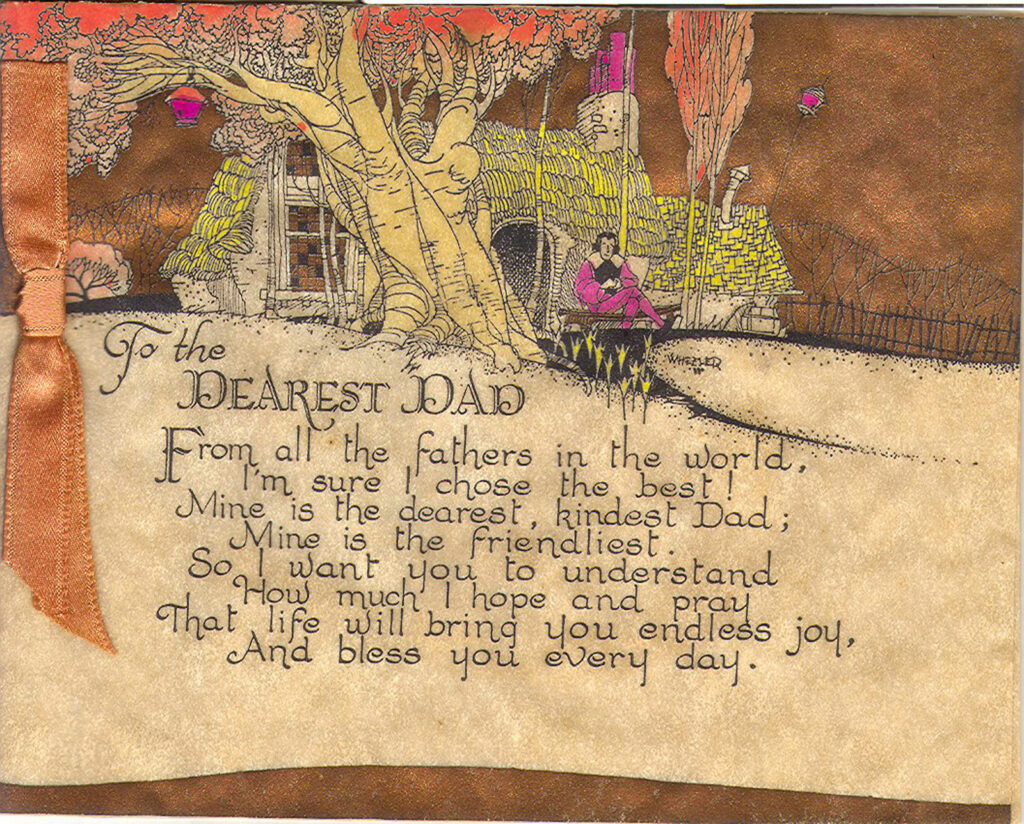December 21 is the shortest day of the year. For many years, candles were one of the few sources of light during these dark days. Today, candles retain an important role in many wintertime holiday celebrations. The Benton County Historical Society’s collection includes a few such candles.
Honeybees are not native to the Americas so the missions in New Spain (including Mexico and California) had to import beeswax and candles from Asia for use in church services. The Spanish galleon Santo Cristo de Burgos left the Philippines in the summer of 1693 loaded with a cargo that included Chinese porcelain, beeswax, and candles. It was never heard from again. But from the blocks of wax, candles, and other items that washed up on the Oregon shore near Nehalem, researchers have concluded that the ship wrecked somewhere off the Oregon coast later that year.

This candle is very likely from that ship: pollen in the beeswax has been identified as being from Luzon Island, Philippines and carbon dating puts its origin in the late 1600s.
It was also in the 1600s that German Christians began putting decorated Christmas trees in their homes. Some were lit with candles wired to the branches. Moravians brought the tradition to the United States in the early 19th century but the tradition only became well-established here in the late 1800s. In 1878 Frederick Artz invented a clip-on candle holder which made lighting the tree easier.
These holders and candles may have been used on trees decorating Philomath College. It wasn’t until at least the 1920s that most people began to switch to strings of electric lights instead.
Some people like the look of candles and similar holders are still available.



